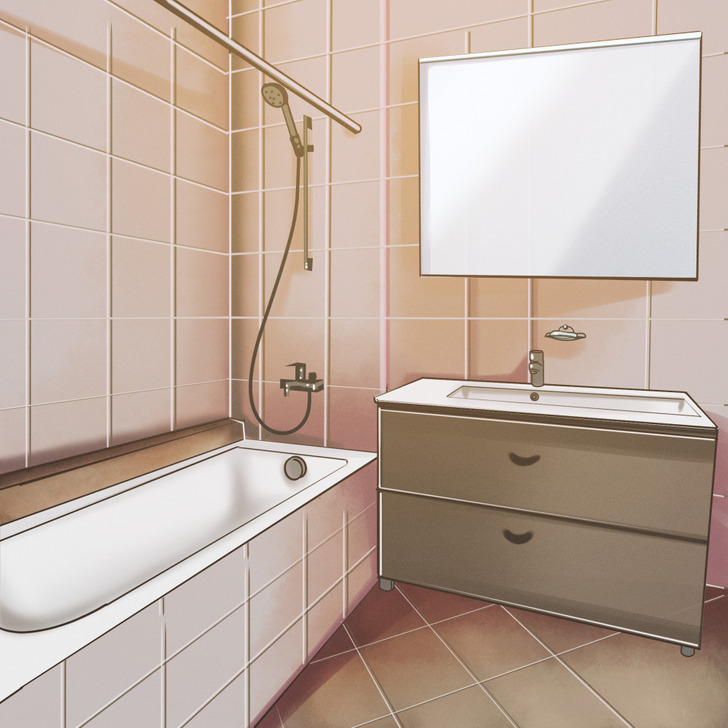How to Paint Tiles in Your Bathroom
If the tiles in your bathroom look outdated, you don’t have to replace them. You can quickly and simply paint them with your own hands.
We at 5-Minute Crafts found out how to paint tiles and made a step-by-step guide for you.
Important! Before you start, put on a breathing mask and gloves, and make sure the room is ventilated.
How to choose paint
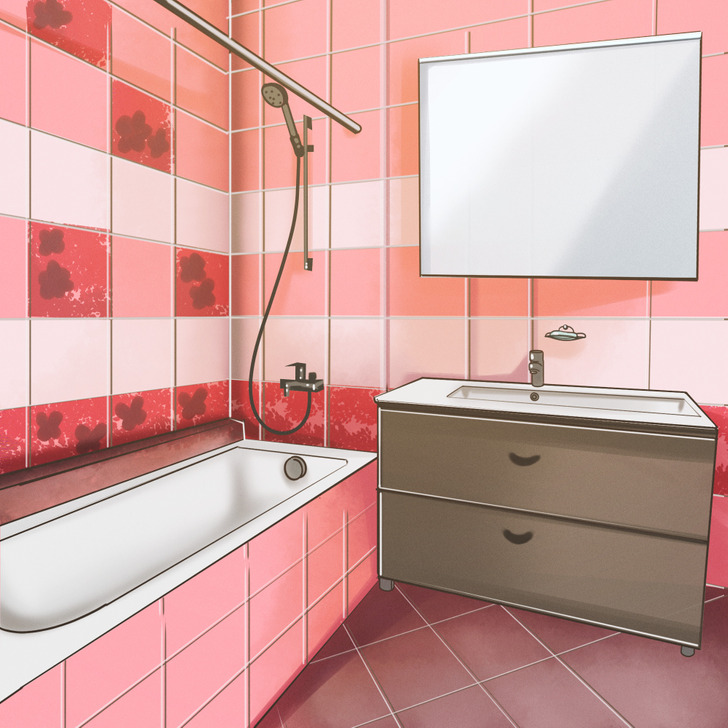
In order to choose the right kind of paint, you need to assess the conditions you’re going to use the paint in. The walls in bathrooms should be able to resist a lot of humidity, water, temperature fluctuations, and cleaning with aggressive detergents.
That being said, all the materials you use should have these characteristics:
- Water-resistance
- Washability
- Resistance to temperature changes
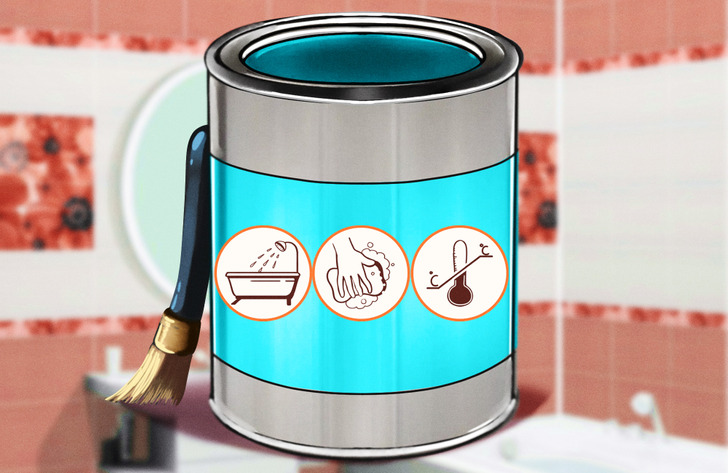
Good kinds of paint:
- Latex — it’s water-based, so it has almost no smell and it dries quickly, which makes the work much faster. It has good color retention and doesn’t crack or peel.
- Acrylic — it’s also water-based but even more durable than latex paint. Use only water-resistant and washable paints in bathrooms, and give preference to those with antifungal additives.
- Alkyd — because the main component of this paint is a strong resin, it’s very water-resistant and hard to damage. But the solvents and the smell only make it possible to use in well-ventilated rooms.
Preparation
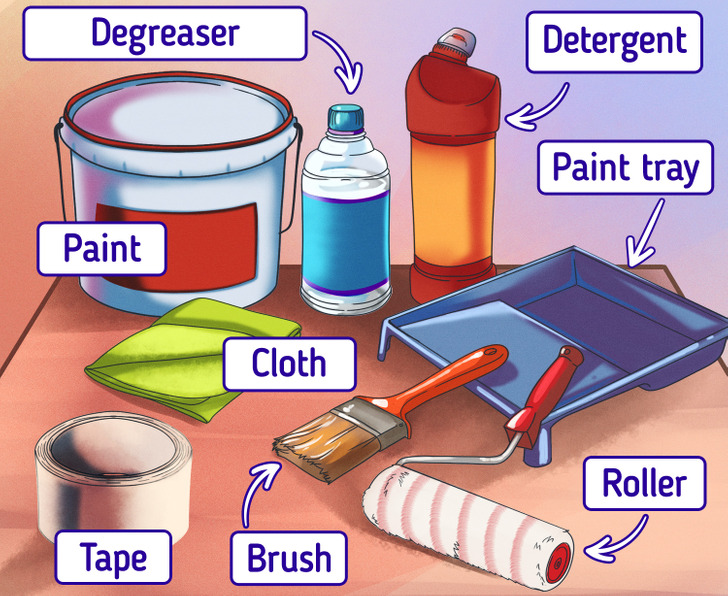
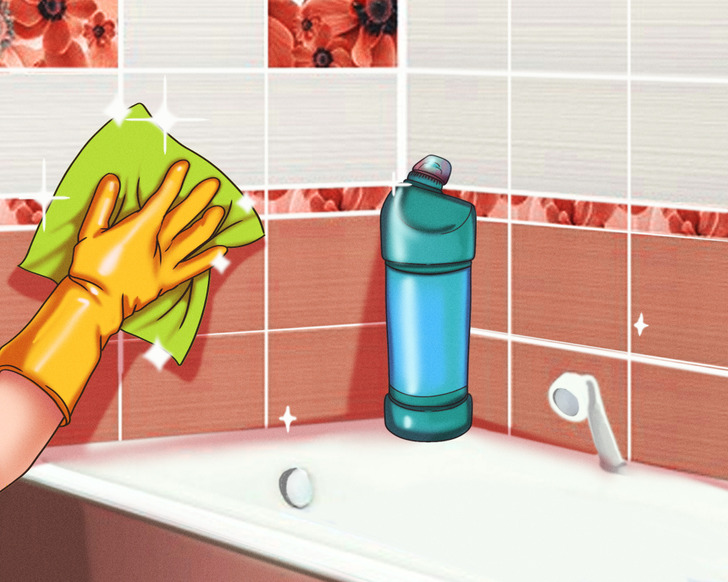
Remove everything from the bathroom, clean the tiles with a sponge and a detergent, wipe them with a clean white cloth, and dry them.
What to do
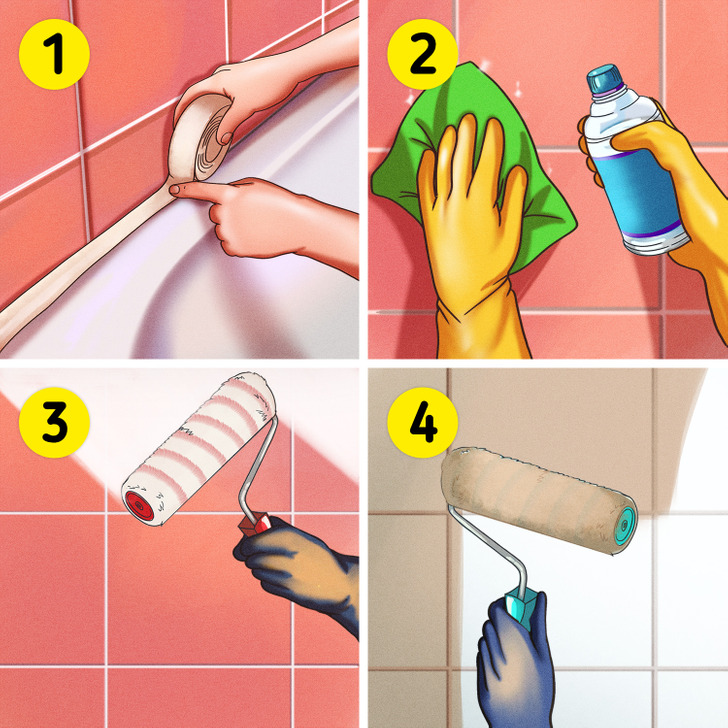
- Using masking tape and film, protect all the elements that don’t need to be painted, including the bathtub, sink, taps, towel rail, and any furniture. Protect the joints on the floor, ceiling, and door frame.
- Carefully degrease the surface you want to paint. You can use white spirit or any other solvent.
- Put 1-2 layers of adhesion primer for shiny surfaces (glass or tiles). Let the primer dry for as long as the description on the pack says.
- Apply the first layer of paint. Use a brush in the corners and other areas where a roller won’t help.
- Wait for the first layer to dry (the necessary time should be on the pack) and apply the second layer. When the paint dries, check if there are stains or bad patches and decide if you need a third layer. If not, it’s done!
✴️ Reminder: You can wash the painted surface only after all the layers dry and the paint hardens.
